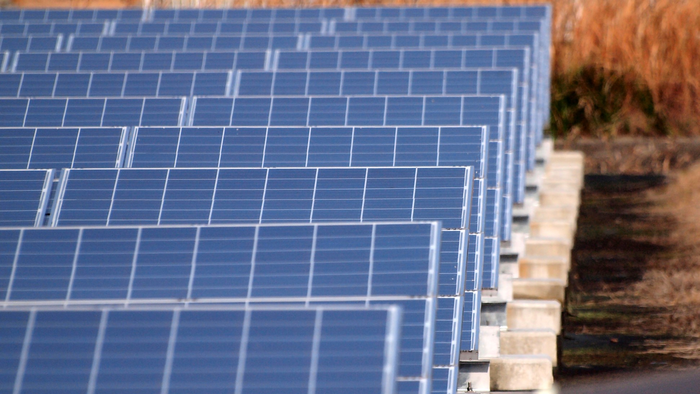The world is currently transitioning to an endurable energy economy in the hopes of dealing with the current energy and climate crisis, and concentrated solar power (CSP) plants are becoming a significant player in this field.
 To reduce water usage for cooling concentrated solar panels (CSP), scientists have developed a supplemental cooling technique for wet cooled CSPs that combines the radiation cooling method with cold storage. Image Credit: coniferconifer.
To reduce water usage for cooling concentrated solar panels (CSP), scientists have developed a supplemental cooling technique for wet cooled CSPs that combines the radiation cooling method with cold storage. Image Credit: coniferconifer.
CSP plants tend to utilize mirrors or lenses spread throughout an immense region to concentrate sunlight onto the receiver of solar panels, transforming solar power into electrical power via turbines or steam engines. However, steam engines need to be cooled off evenly to maintain their high-power conversion efficiency.
Normally, steam engine power plants utilize the water-intensive wet cooling technique to disperse the waste heat that has been generated. But such processes have the ability to lose huge amounts of water as a result of the evaporation and, thus demand a constant water supply.
This poses a severe threat as the majority of the CSP plants are set up in hot and dry regions with restricted water resources.
In a recent study reported, a research group headed by Professor Ronggui Yang from Huazhong University of Science and Technology, China has discovered a method to make the cooling process less intensive.
The study was reported in the journal Energy Storage and Saving on February 25th, 2022.
A cooling method was developed by the researchers that integrated radiative cooling with cold storage. When used along with wet cooling, the amount of water used per year has been shown to decrease.
Harsh environments, along with growing water demands in other sectors such as agriculture, industry, and domestic uses, severely competes with power plants for water resources. As a result, we wanted to develop a technique that would make wet cooling of power plants less water-intensive and still maintain the desired thermal efficiency.
Ronggui Yang, Professor, Huazhong University of Science and Technology
The auxiliary cooling method developed by the team integrated the best of both dry and wet cooling. Radiative cooling with cold storage is a dry cooling technique involving coolers created of highly solar reflective material with the ability to direct heat dissipation at selective infrared wavelengths into deep space in the lack of absorption in the environment.
A radiative cooling system was added by the researchers to the evaporating cooling tower of a reference CSP plant alike the Mojave Solar Project in the United States.
To analyze the potential of the designed system, they made computer models to monitor the water-saving ability of daytime-only as well as day-night radiative cooling systems. The researchers examined the cooling and water-saving potential in over 3000 locations under various weather conditions in the country.
The outcomes displayed that the yearly consumption of water could decrease by 40 to 60% in the hot southwestern region of the United States by accepting daytime-only radiative cooling. But if the radiative systems together with cold storage could function day and night, the yearly water-saving potential could be as high as 65 to 85%.
The suggested technique offers an effective approach to retaining the thermal efficiency of wet-cooled CSP plants with decreased water consumption. In this study, the knowledge gained could be beneficial for developing sophisticated round-the-clock cooling systems for CSP plants.
The global water consumption by the power generation sector is expected to double within the next four decades. Our supplemental cooling system design can help tackle the increasing water demand for power plants located in water-stressed regions amid deserts and arid regions.
Ronggui Yang, Professor, Huazhong University of Science and Technology
Journal Reference:
Aili, A., et al. (2022) Radiative Cooling and Cold Storage for Concentrated Solar Power Plants. Energy Storage and Saving. doi.org/10.1016/j.enss.2022.02.002.